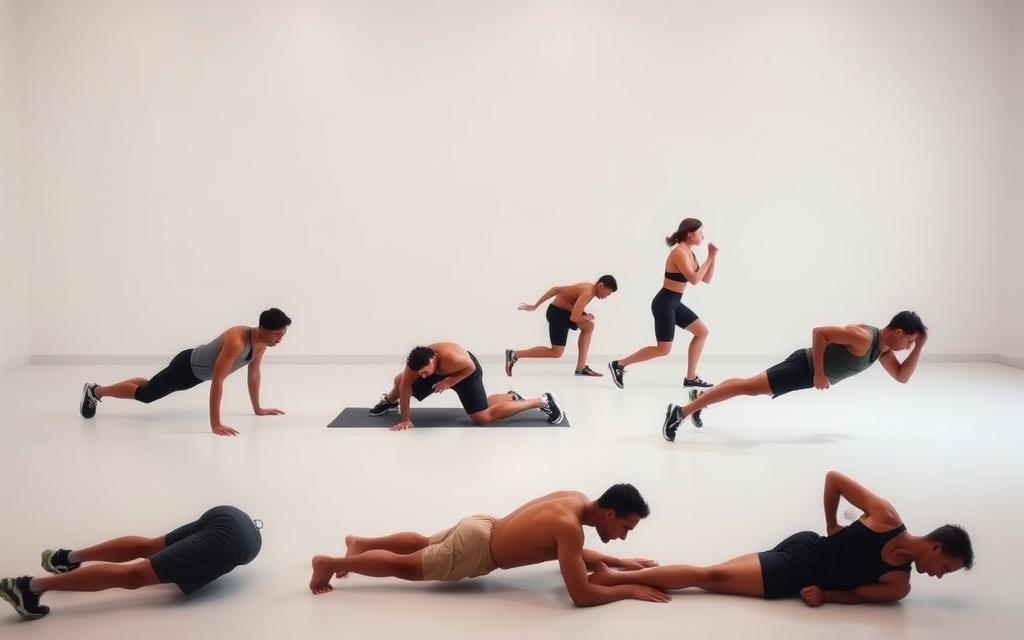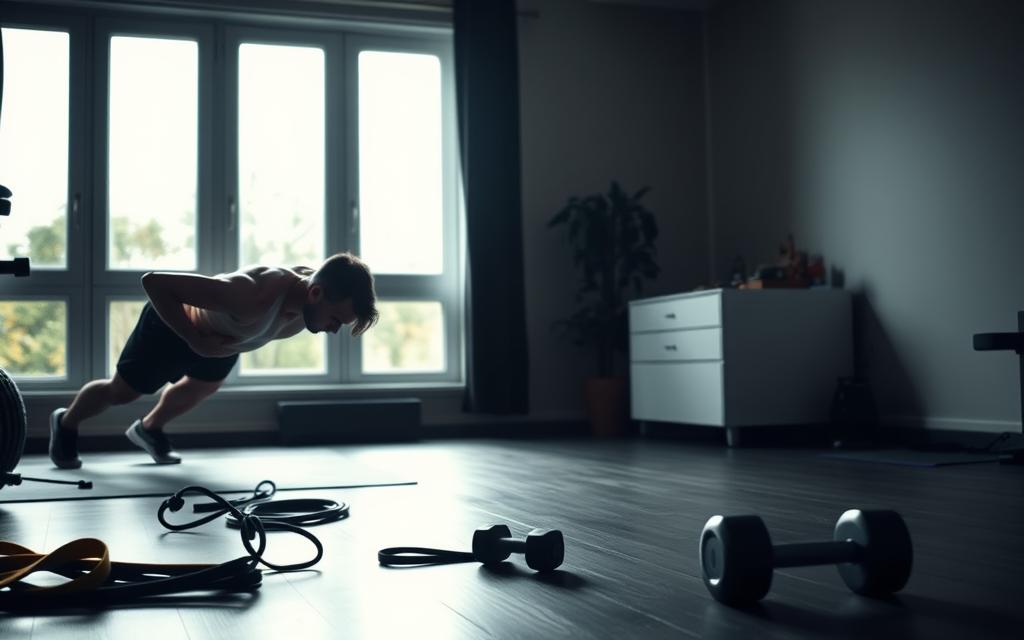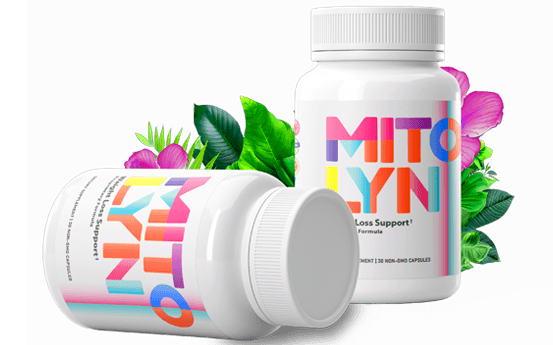8-Second Shackle Shattering Secret
That Explodes Your Muscle & Strength Gain
Muscle Mass Gainer. Have you ever signed up for a gym membership but barely used it? You’re not alone. Studies show that 93% of gym memberships are a waste of money. Gyms can be crowded, expensive, and hard to get to.
But what if you could get fit without all the hassle? Imagine reaching your fitness goals without spending a lot of money or time. The secret is in bodyweight workouts. These isometric mass exercises can be done anywhere, like at home or in a park.
So, why keep paying for a gym that’s not worth it? It’s time to find a smarter way to stay fit. Let’s look at why gyms often don’t work and how bodyweight workouts can help you succeed.
Key Takeaways
- 93% of gym memberships are considered a waste of money due to hidden costs and low usage.
- Bodyweight workouts offer a cost-effective and flexible alternative to traditional gyms.
- You can exercise anywhere, eliminating the need for expensive equipment or memberships.
- Proper nutrition and consistent training are key to achieving fitness goals.
- This article will provide practical tips and routines to help you get started.
Introduction: Uncovering Gym Membership Myths
Ever wondered why gym memberships rarely live up to the hype? You’re not alone. Studies show that 93% of gym memberships are a waste of money. Gyms can be crowded, expensive, and hard to get to.
Many people sign up with high hopes but barely use their membership. The modern fitness dilemma is a mismatch between cost and benefits. You pay for access but life gets in the way, making the gym an unused expense.
But there’s a better way. Bodyweight training is a reliable alternative for building strength and muscle. You don’t need expensive equipment or a monthly fee. All you need is your own body and a little space. This approach is flexible, effective, and accessible to everyone, from beginners to experienced athletes.
Regular exercise and proper planning are key to success. Whether you’re looking to get fit or stay in shape, bodyweight workouts can help you achieve your goals without the hassle of a gym membership. Let’s explore why this method is gaining popularity and how it can work for you.
The Modern Fitness Dilemma
Traditional gyms often promise results but fail to deliver. The high cost, combined with low usage, makes them a poor investment for most people. Instead of committing to a gym, consider a simpler approach: isometric mass bodyweight workouts.
These exercises are versatile and can be done anywhere. You can build strength, improve flexibility, and stay fit without stepping foot in a gym. Plus, you save time and money by eliminating the need for expensive equipment or memberships.
| Gym Membership | Bodyweight Training |
|---|---|
| High cost with hidden fees | No cost or minimal investment |
| Requires commuting | Can be done anywhere |
| Limited flexibility | Fits any schedule |
Ready to ditch the gym and embrace a smarter way to stay fit? Bodyweight training is the solution you’ve been looking for. Let’s dive deeper into how it works and why it’s so effective.
The High Cost of Traditional Gyms
Did you know that most gym memberships end up costing more than they’re worth? Beyond the monthly fee, there are often hidden charges that can drain your wallet. From initiation fees to annual maintenance costs, the expenses add up quickly. For many, this financial burden makes traditional gyms an impractical choice.
Hidden Fees and Surprise Costs
When you sign up for a gym, the price you see isn’t always what you pay. Gyms often charge extra for things like locker rentals and towel services. These extra costs can make a cheap gym membership expensive.
Building strength and muscle doesn’t have to cost a lot. Instead of paying for a gym, try bodyweight training. You can do these exercises anywhere without any equipment.
Gyms can be expensive and limiting. Bodyweight training lets you work out anywhere. This saves money and makes it easier to stay fit.
By choosing self-driven workouts, you can reach your fitness goals without gym fees. Whether you want to get stronger or build muscle, there’s a better, cheaper way. It’s time to rethink fitness for your budget and lifestyle.
Ripped With Bodyweight: A Revolutionary Approach
What if you could get fit without going to the gym? The Muscle Mass Gainer program is a game-changer. It lets you train anywhere, anytime, without expensive equipment or crowded gyms.
This method is very flexible. You can work out at home, in a park, or while traveling. All you need is your body and maybe a pull-up bar. It’s a smart, time-saving choice compared to gyms.
Every move you make helps your fitness. The program focuses on quick, effective workouts. You’ll build strength, improve endurance, and boost flexibility, all without a gym.
Staying consistent is key to progress. The Isometric Mass program helps you stick to your routine. It’s perfect for anyone, whether you’re new to fitness or already in shape.
| Traditional Gym | Bodyweight Training |
|---|---|
| Requires commuting | Can be done anywhere |
| Expensive equipment | Minimal or no equipment |
| Fixed schedule | Fits any schedule |
Ready to try a smarter way to stay fit? The Isometric Mass program is your key to fitness goals without the costs. Start today and enjoy training on your own terms.
Embracing Bodyweight Workouts: The Benefits
Bodyweight exercises are effective and affordable. They work your whole body, improve balance, and strengthen your core. You don’t need expensive gear or a gym membership.
Full-Body Engagement
Bodyweight exercises work many muscles at once. Squats and lunges use your legs, core, and hands for balance. This full-body work makes every workout count.
In just a week of doing these exercises, you’ll see strength and endurance gains. Exercises like push-ups and planks are great for fitness. They challenge your body in ways gym machines can’t.
Improved Stability and Core Strength
Bodyweight Isometric workouts are great for making your body stronger. Side planks and mountain climbers help you stay balanced. This makes your core muscles stronger.
A strong core helps you stand up straight and lowers injury risk. It’s good for your body.
Doing these exercises helps you move better and know your body better. This is why bodyweight training is a good choice. You don’t need heavy weights or machines.
Try these exercises in your routine today. With regular practice, you’ll see big improvements in strength and balance.
Building Muscle Naturally Without Weights
Do you think you need weights to build muscle? No, you don’t. A good routine with just your body can give you great results. Bodyweight exercises are a strong way to build muscle without expensive gear or gym memberships.
Muscle growth happens when you challenge your body. High-repetition, low-rest techniques can make your muscles tired naturally. This is how you grow muscle, even without weights.
Training to Fatigue Without Weights
Training until you can’t do anymore is a proven way to grow muscle. With bodyweight exercises, you can do this by doing more reps or less rest. For example, push-ups, squats, and lunges can be done until you’re too tired.
Studies show that doing lots of low-load exercises can be as good as lifting heavy weights. Doing pull-ups and dips works many muscles at once. This makes your effort more effective and speeds up your progress.
Here’s a simple routine to get started:
- Push-ups: 3 sets of 15 reps
- Squats: 3 sets of 20 reps
- Plank: Hold for 60 seconds
- Mountain climbers: 3 sets of 30 seconds
Being consistent is important. Stick to your routine, and you’ll see results. With hard work, you can build muscle naturally and keep it up, all without going to the gym.
Crafting an Effective Bodyweight Routine
Are you ready to take control of your fitness journey with a simple yet powerful approach? A well-designed bodyweight routine can help you build muscle, get stronger, and stay on track—all without going to the gym. The key is to make your workouts fit your goals and fitness level.
Structuring Your Workout Routine
First, pick exercises that work different muscle groups. A good routine includes push-ups, squats, lunges, and planks. Aim for 3-4 sessions a week, each lasting 30-40 minutes. This lets you recover while keeping you on track to build muscle effectively.
Here’s a sample structure:
- Warm-up: 5-10 minutes of dynamic stretches
- Main workout: 3 sets of 10-15 reps for each exercise
- Cool-down: 5 minutes of static stretching
Adapting to Your Fitness Level
Your fitness level tells you how to change exercises. Beginners can start with easier versions, like knee push-ups or assisted squats. As you get better, make the exercises harder by adding reps, reducing rest time, or trying harder moves like pistol squats or handstand push-ups.
Tracking your progress is key. Keep a log of your reps, sets, and how you feel after each workout. This helps you adjust your routine to keep building muscle and getting stronger.
| Fitness Level | Exercise Variation |
|---|---|
| Beginner | Knee push-ups, assisted squats |
| Intermediate | Standard push-ups, lunges |
| Advanced | Handstand push-ups, pistol squats |
Make your routine fit your level to keep moving forward. Being consistent is key to success. Stay on track, and you’ll see changes.
Nutrition Essentials for Body Transformation
Want a lean, muscular body? It’s not just about working out. Nutrition is just as important. Let’s look at how to fuel your body right.
Fueling Muscle Growth
Your body needs the right mix of nutrients to build strength. Protein, carbs, and fats are all important. Aim for 30–35% protein, 55–60% carbs, and 15–20% fats.
When bulking, eat about 15% more calories to grow muscles. For a 155 lb person, that’s around 3,450 calories a day. Cutting phase? Eat slightly less to lose fat while keeping muscle. Start with 2,550 calories a day.
Here’s a simple guide to macronutrient needs:
| Phase | Protein (g) | Carbs (g) | Fats (g) |
|---|---|---|---|
| Bulking | 259-302 | 474-518 | 58-77 |
| Cutting | 191-223 | 351-383 | 43-57 |
Eat nutrient-rich foods like lean meats, whole grains, and healthy fats. These foods fuel your workouts and help you recover and grow. Small changes, like adding veggies or nuts, can make a big difference.
Consistency is key. Stick to your plan, and you’ll build strength and transform your body. With the right nutrition, you’ll be amazed at what you can do.
Quick Results: The Science Behind Bodyweight Training
Want to see progress fast? High-intensity bodyweight workouts give quick results. They focus on intensity and less rest to improve strength and endurance. Let’s explore the science behind this.
The Role of Intensity and Recovery
Every rep matters for muscle building and fitness. Short, intense workouts are just as good as longer ones. For example, a 20-minute circuit can boost your energy for hours.
Top athletes use rep-based training for efficiency. They do compound movements like push-ups and squats. This saves time, burns calories, and grows muscles. Even a few minutes can be as effective as a gym session.
Recovery is also key. After intense workouts, your muscles need time to repair and grow. Proper hydration, stretching, and sleep help with recovery. Balance intensity with rest for faster progress and avoid burnout.
Here’s how to use these principles in your routine:
- Focus on compound exercises like squats and push-ups.
- Minimize rest between sets to maintain intensity.
- Track your progress by increasing reps or reducing rest time.
- Prioritize recovery with stretching and adequate sleep.
High-intensity bodyweight training can help you reach your fitness goals quickly. Start today and see the impact of every rep and minute.
Must-Try Bodyweight Exercises for Complete Fitness
Want a workout that fits your life and gives results? Bodyweight exercises are perfect. They are easy, work well, and need no gear. You can do them anywhere, like home, a park, or while traveling.

Essential Compound Movements
Compound exercises work many muscles at once. This makes them very good. For example, the pull-up works your back, arms, and core. Other great ones are push-ups, squats, and lunges.
These exercises help you get stronger and fitter.
Here’s a quick guide to essential compound exercises:
- Pull-ups: Strengthen your upper body and core.
- Push-ups: Build chest, shoulder, and arm strength.
- Squats: Target your legs and glutes for lower body power.
- Lunges: Improve balance and leg muscle definition.
Variations to Keep It Interesting
To avoid plateaus, try different variations of these exercises. For instance, switch from standard push-ups to diamond push-ups for a greater challenge. For pull-ups, experiment with wide-grip or chin-up styles. These changes keep your workouts fresh and progressive.
Here are some variations to consider:
| Exercise | Variation |
|---|---|
| Pull-up | Wide-grip, chin-up |
| Push-up | Diamond, decline |
| Squat | Pistol, jump |
| Lunge | Walking, reverse |
Don’t forget the importance of rest. Taking short breaks between sets allows your muscles to recover, ensuring better performance in the next round. Aim for 30-60 seconds of rest between exercises.
Experiment with these movements and find what works best for you. With consistency, you’ll see significant improvements in your strength, endurance, and overall fitness.
Overcoming Fitness Barriers and Limiting Beliefs
Have you ever felt stuck in your fitness journey, unsure of how to move forward? Many people face mental barriers that hold them back from achieving their goals. These self-imposed limits can be just as challenging as physical ones. But with the right mindset, you can break through and unlock your full potential.
Breaking Through Mental Barriers
One of the biggest hurdles in fitness is overcoming limiting beliefs. Thoughts like “I’m not strong enough” or “I’ll never see results” can sabotage your progress. The truth is, fitness is as much about mental strength as it is about physical effort. Every push-up or burpee you complete is a step toward proving those doubts wrong.
Exercises like the burpee are not just physical challenges—they’re mental ones too. Completing a set of burpees requires focus, determination, and resilience. These qualities translate into other areas of life, helping you tackle obstacles with confidence.
Here are some common limiting beliefs and how to overcome them:
- “I don’t have enough time.” Start small. Even 10 minutes of exercise can make a difference.
- “I’m not athletic.” Fitness is a skill that improves with practice. Everyone starts somewhere.
- “I’ll never stick to it.” Focus on consistency, not perfection. Small, regular efforts lead to big results.
Shifting your mindset is a crucial part of your fitness journey. Instead of seeing challenges as roadblocks, view them as opportunities to grow. Every push-up you do is a reminder of your strength and capability.
| Limiting Belief | Mindset Shift |
|---|---|
| “I’m not strong enough.” | “Every rep makes me stronger.” |
| “I’ll never see results.” | “Progress takes time, but it’s worth it.” |
| “I don’t have the energy.” | “Exercise boosts my energy and mood.” |
Remember, fitness is accessible to everyone. By changing your mindset and taking small, consistent steps, you can achieve your goals. Start today and prove to yourself that you’re capable of more than you think.
Time-Efficient Strategies for Optimal Workouts
What if you could maximize your workout results in half the time? By focusing on speed, technique, and form, you can achieve more in shorter sessions. The key is to prioritize quality over quantity, ensuring every movement counts.
Moving with speed doesn’t mean sacrificing control. Instead, it’s about maintaining precision while increasing intensity. For example, perform squats or push-ups at a steady pace, ensuring your form remains impeccable. This approach maximizes calorie burn and muscle engagement.
Refining your technique is equally important. Small adjustments, like keeping your core tight during planks or aligning your knees during lunges, can make a big difference. These tweaks not only enhance effectiveness but also reduce the risk of injury.
Here’s how to structure a time-efficient workout:
- Warm up for 5 minutes with dynamic stretches.
- Perform compound exercises like squats, push-ups, and pull-ups.
- Minimize rest between sets to maintain intensity.
- Cool down with 5 minutes of static stretching.
Remember, time-efficiency doesn’t mean cutting corners. By focusing on technique and form, you can achieve significant results in just 20-30 minutes. This approach is perfect for busy lifestyles, allowing you to stay consistent without sacrificing quality.
Make every second count. With the right mindset and strategies, you can transform your fitness routine and achieve your goals faster than ever. Start today and experience the power of efficient, effective workouts.
Boosting Confidence Through a Healthy Lifestyle
Have you ever noticed how a healthy lifestyle can transform not just your body, but your entire outlook on life? It’s not just about looking good—it’s about feeling strong, capable, and ready to tackle any challenge. When you commit to regular exercise and proper nutrition, you’re not just building muscle; you’re building a mindset that thrives on resistance and perseverance.

Building a Warrior Mindset
Every workout is a battle against resistance, whether it’s pushing through a tough set of squats or staying consistent with your routine. This struggle mirrors the challenges you face in everyday life. By overcoming physical resistance, you train your mind to handle stress, setbacks, and obstacles with resilience. It’s not about doing a lot at once—it’s about taking small, consistent steps that add up over time.
A healthy lifestyle doesn’t require complicated steps or extreme measures. Simple things like daily walks, mindful eating, and regular workouts can make a big difference. These habits build a warrior mindset, empowering you to face life’s challenges head-on. Every thing you do counts, from choosing a salad over fast food to completing an extra rep during your workout.
Here’s how to integrate fitness into your daily routine:
- Start with small goals, like 10 minutes of exercise a day.
- Focus on consistency rather than intensity.
- Celebrate every victory, no matter how small.
Improving your physical strength naturally boosts your self-esteem. When you see progress in your workouts, you’ll feel more confident in other areas of life. This isn’t about doing a lot—it’s about doing the right things consistently. Over time, these efforts create a ripple effect, transforming not just your body, but your entire outlook.
Remember, every step you take toward a healthier lifestyle is a step toward becoming the best version of yourself. Start today, and watch how small changes lead to big personal victories.
Advanced Techniques: Explosive Movements and Speed
Ready to take your workouts to the next level with explosive power and speed? Advanced techniques can transform your routine, helping you get more out of every session. By incorporating rapid, controlled movements, you can enhance strength, agility, and overall athletic performance.
Techniques for Explosive Power
Explosive power is all about generating force quickly. This type of training engages fast-twitch muscle fibers, which are essential for rapid, powerful movements. Exercises like plyometric push-ups, jump squats, and clap push-ups are excellent for building this kind of strength.
To get started, focus on quality over quantity. Perform 3-5 sets of 3-6 reps for each exercise, ensuring proper form and control. Rest for 2-3 minutes between sets to allow for recovery and maintain intensity.
Here’s a breakdown of advanced exercises to try:
| Exercise | Reps | Sets |
|---|---|---|
| Plyometric Push-ups | 3-6 | 3-5 |
| Jump Squats | 3-6 | 3-5 |
| Clap Push-ups | 3-6 | 3-5 |
Explosive techniques aren’t just for athletes. They can improve your performance in everyday tasks, like lifting heavy objects or climbing stairs. The key is to start slow and gradually increase intensity to avoid injury.
Safety is crucial when attempting advanced drills. Always warm up for 10-15 minutes with dynamic stretches to prepare your muscles. After your workout, cool down with light aerobic activity and static stretching to promote recovery.
By integrating these techniques into your routine, you’ll get stronger, faster, and more agile. Whether you’re an experienced exerciser or just looking to spice up your workouts, explosive movements can take your fitness to new heights. Start today and see the difference for yourself!
Progressive Overload: Enhancing Your Bodyweight Routine
Have you ever wondered how to keep making progress in your workouts without hitting a plateau? The answer lies in progressive overload, a principle that ensures your muscles are continuously challenged. By gradually increasing the difficulty of your exercises, you can build strength and endurance effectively.
Small changes, like adjusting your leg position or using different floor variations, can make a big difference. For example, elevating your legs during push-ups increases the load on your upper body and core. These adjustments keep your workouts fresh and challenging.
Implementing Progressive Overload
Start with basic movements and gradually increase their difficulty. If you’re doing squats, try single-leg squats or pistol squats to engage your legs more intensely. For core exercises, progress from standard planks to side planks or plank variations with added movement.
Here’s how to apply progressive overload step-by-step:
- Increase reps or sets over time.
- Adjust your leg or arm position to add resistance.
- Incorporate advanced variations like plyometric jumps or elevated push-ups.
Remember, the key is to challenge your body while maintaining proper form. This ensures you’re building strength safely and effectively.
Structured routines that evolve with your fitness level are essential. Track your progress and celebrate small victories, like completing more reps or mastering a new variation. These milestones keep you motivated and focused on your long-term goals.
By embracing progressive overload, you’ll see continuous improvements in your strength and endurance. Start today and take your bodyweight training to the next level!
Real Success Stories and Planning Your 12-Week Journey
Have you ever wondered how ordinary people achieve extraordinary fitness transformations? The answer lies in their commitment, consistency, and a well-structured plan. Real-life success stories prove that you don’t need a gym membership to achieve remarkable results. Let’s explore how you can start your own 12-week journey to a stronger, healthier you.
Inspiring Transformations
Take Michael, for example. In just 12 weeks, he reduced his body fat from 22% to 12% by focusing on bodyweight exercises. By adjusting his training position and incorporating progressive overload, he built lean muscle and improved his overall fitness. Similarly, Mathew dropped from 190 lbs to 165 lbs, earning 2nd place at the OCB Chesapeake Classic.
These stories highlight the power of consistency and proper planning. Whether it’s reducing body fat, building muscle, or improving endurance, the key is to stay committed to your goals. Every shoulder press, squat, and push-up brings you closer to your transformation.

Creating a Sustainable Plan
To achieve lasting results, you need a clear, actionable plan. Start by setting specific goals, like reducing body fat or increasing strength. Break your journey into 12 weeks, with milestones every 4 weeks to track progress. Here’s a simple framework to get started:
| Week | Focus | Key Actions |
|---|---|---|
| 1-4 | Foundation | Master basic exercises like squats, push-ups, and planks. |
| 5-8 | Progression | Increase reps, adjust position, and add variations. |
| 9-12 | Intensity | Incorporate advanced moves like pistol squats and handstand push-ups. |
Nutrition is equally important. Focus on a balanced diet that supports your weight loss or muscle-building goals. Track your meals and stay hydrated to fuel your workouts effectively.
Remember, success comes from consistent effort. Celebrate small victories, like completing an extra rep or mastering a new exercise. These milestones keep you motivated and focused on your long-term goals.
Your 12-week journey is more than just a fitness plan—it’s a lifestyle change. By staying committed and adapting your routine, you’ll achieve results that last. Start today and take the first step toward your transformation.
Conclusion
Imagine achieving your fitness goals without the burden of expensive gym fees. Traditional gym memberships often drain your wallet and motivation, but there’s a smarter way to get fit. Bodyweight training offers a cost-effective, flexible alternative that delivers real results.
The benefit of this approach is clear: you save money, time, and energy. You can build a strong arm and overall physique without stepping foot in a gym. With proper technique, planning, and nutrition, you can sculpt your body naturally and sustainably.
Take the first step today. Apply the practical tips from this article and start your journey toward a healthier, stronger you. The power to transform your life is in your hands—literally. Embrace the freedom and effectiveness of bodyweight exercises and see the difference for yourself.




